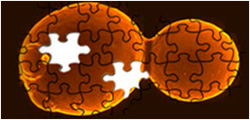
Figure 1. DAMGO-induced concentration-dependent stimulation of intracellular calcium mobilization in CHO-K1/OPRM1/Gα15 cells. The cells were loaded with Calcium-4 (Cat. No. R8142; Molecular Devices) prior to stimulation with OPRM1 agonist, DAMGO. The intracellular calcium change was measured by FLIPRTETRA. The relative fluorescent units (RFU) were recorded and normalized to plot against the log of the cumulative doses of DAMGO (mean ± SEM, n = 3). The EC50 of DAMGO on CHO-K1/OPRM1/Gα15 cells was 2.75 nM.
Notes:
EC50 value is calculated with four parameter logistic equation:
Y=Bottom + (Top-Bottom) / (1+10^ ((LogEC50-X)*Hill Slope))
X is the logarithm of concentration. Y is the response.
Y is RFU and starts at Bottom and goes to Top along a sigmoid curve.

Figure 2. Dose dependent stimulation of intracellular cAMP accumulation upon treatment with DAMGO in CHO-K1/OPRM1/Gα15 cells. d2 acceptor fluorophore -labeled cAMP (Cat. No. 62AM4PEC; Revvity) and intracellular cAMP in CHO-K1/OPRM1/Gα15 cells competitively bind with Europium Cryptate-labeled anti-cAMP monoclonal antibody. The FRET signal decreases as the intracellular cAMP concentration rises and was measured by plate reader (Pherastar, BMG). The EC50 of DAMGO on CHO-K1/OPRM1/Gα15 cells was 2.24 nM.

Figure 3. Dose dependent stimulation of intracellular IP-One accumulation upon treatment with DAMGO in CHO-K1/OPRM1/Gα15 cells. d2 acceptor fluorophore-labeled IP-One (Cat. No. 62IPAPEB; Revvity) and intracellular IP-One in CHO-K1/OPRM1/Gα15 cells competitively bind with Europium Cryptate-labeled anti-IP-One antibody. The FRET signal decreases as the intracellular IP-One concentration rises and was measured by plate reader (Pherastar, BMG). The EC50 of DAMGO on CHO-K1/OPRM1/Gα15 cells was 7.38 nM.

Figure 1. DAMGO-induced concentration-dependent stimulation of intracellular calcium mobilization in CHO-K1/OPRM1/Gα15 cells. The cells were loaded with Calcium-4 (Cat. No. R8142; Molecular Devices) prior to stimulation with OPRM1 agonist, DAMGO. The intracellular calcium change was measured by FLIPRTETRA. The relative fluorescent units (RFU) were recorded and normalized to plot against the log of the cumulative doses of DAMGO (mean ± SEM, n = 3). The EC50 of DAMGO on CHO-K1/OPRM1/Gα15 cells was 2.75 nM.
Notes:
EC50 value is calculated with four parameter logistic equation:
Y=Bottom + (Top-Bottom) / (1+10^ ((LogEC50-X)*Hill Slope))
X is the logarithm of concentration. Y is the response.
Y is RFU and starts at Bottom and goes to Top along a sigmoid curve.

Figure 2. Dose dependent stimulation of intracellular cAMP accumulation upon treatment with DAMGO in CHO-K1/OPRM1/Gα15 cells. d2 acceptor fluorophore -labeled cAMP (Cat. No. 62AM4PEC; Revvity) and intracellular cAMP in CHO-K1/OPRM1/Gα15 cells competitively bind with Europium Cryptate-labeled anti-cAMP monoclonal antibody. The FRET signal decreases as the intracellular cAMP concentration rises and was measured by plate reader (Pherastar, BMG). The EC50 of DAMGO on CHO-K1/OPRM1/Gα15 cells was 2.24 nM.

Figure 3. Dose dependent stimulation of intracellular IP-One accumulation upon treatment with DAMGO in CHO-K1/OPRM1/Gα15 cells. d2 acceptor fluorophore-labeled IP-One (Cat. No. 62IPAPEB; Revvity) and intracellular IP-One in CHO-K1/OPRM1/Gα15 cells competitively bind with Europium Cryptate-labeled anti-IP-One antibody. The FRET signal decreases as the intracellular IP-One concentration rises and was measured by plate reader (Pherastar, BMG). The EC50 of DAMGO on CHO-K1/OPRM1/Gα15 cells was 7.38 nM.
CHO-K1/OPRM1/Gα15 Stable Cell Line
| M00304 | |
|
|
|
| ¥1,661,121.00 | |
|
|
|
|
|
|
| Ask us a question | |








































